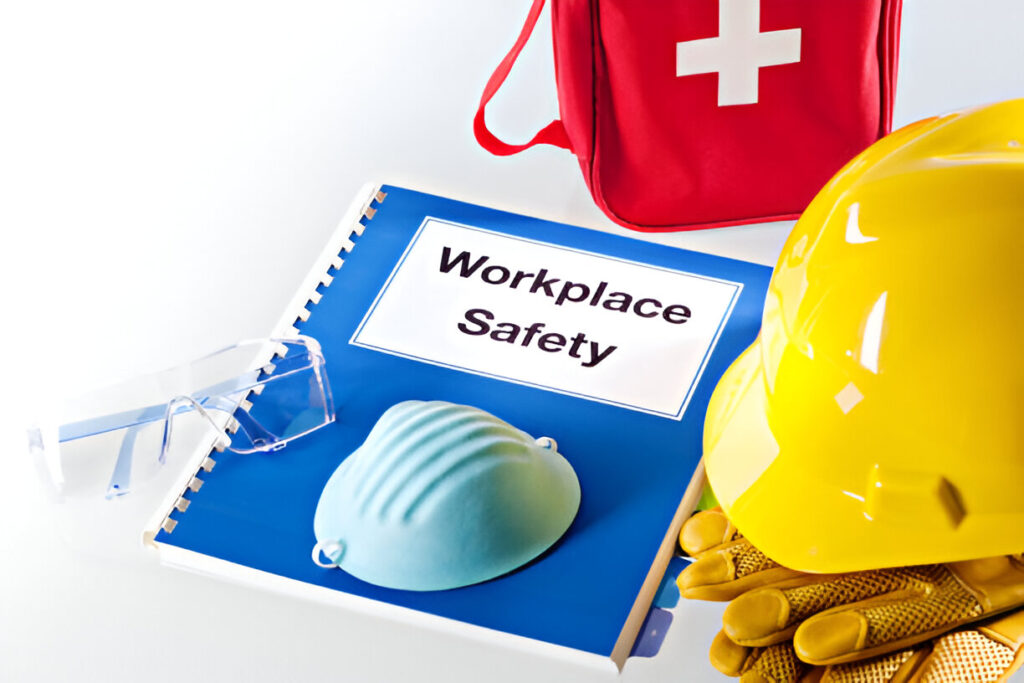Safety in the workplace is paramount, and having the right safety equipment is critical for safeguarding employees from potential hazards. In any office setting, it’s easy to overlook certain risks, but being prepared can help prevent accidents and emergencies. Implementing the proper safety measures not only protects the team but also boosts productivity and morale. Here’s a comprehensive guide on the most important safety equipment every office should have.

1. Common Office Hazards: Identifying Hidden Risks
Before diving into the necessary safety equipment, it’s crucial to recognize common office hazards that can often be ignored. These risks can jeopardize the well-being of employees and need immediate attention. Some of the most frequent hazards include:
- Wet floors that can cause slips and falls.
- Loose cables that pose a tripping hazard.
- Cluttered walkways obstructing emergency exits.
- Faulty wiring, leading to electrical accidents.
- Overloaded sockets, increasing the risk of fire.
- Harmful fumes from malfunctioning appliances.
Identifying and addressing these hazards is the first step toward creating a safer office environment. Regular inspections and audits can help in recognizing potential risks that might otherwise go unnoticed.
2. Fire Safety Equipment: A Necessity for Every Office
Fire safety should be a top priority in any office. A small fire can quickly escalate, putting lives and assets at risk. Ensuring that your office is equipped with the right safety equipment is essential for minimizing fire damage. Some of the most important fire safety tools include:
- Fire extinguishers: Offices should have the correct type of extinguisher for different types of fires, such as electrical or chemical.
- Fire doors: These prevent the spread of fire and smoke, offering a safe escape route.
- Fire sprinkler systems: Automatically activated, these help contain the fire until emergency responders arrive.
- Fire blankets: Used to smother small fires or for personal protection when escaping.
- Smoke detectors and carbon monoxide alarms: These ensure early detection of fire or dangerous gases, providing precious time to evacuate.
It’s important that all employees are trained on how to properly use these tools in an emergency. Regular fire drills can also help ensure everyone knows the office evacuation procedures.
3. Evacuation Equipment: Essential for Safe Exits
During an emergency, it’s crucial that all employees can evacuate safely, including those with mobility challenges. Having specialized safety equipment, such as evacuation chairs, can ensure that everyone, regardless of physical abilities, can exit the building safely.
Evacuation chairs, like those from Evacuscape, allow individuals to descend stairs quickly and safely during emergencies. These chairs are designed to be lightweight and easy to maneuver, making them essential for offices located in multi-story buildings.
In addition to evacuation chairs, your office should have a clear evacuation plan that includes:
- Clearly marked emergency exits.
- Well-lit signage to guide employees to safety.
- Evacuation drills to practice safe exits.
- Designated evacuation points to gather employees after an emergency.
Having these measures in place ensures that all employees are prepared for a quick and orderly evacuation.
4. First Aid Kits: Immediate Response to Minor Accidents
In any office, accidents can happen unexpectedly. Having well-stocked first aid kits strategically placed throughout the workplace is essential for treating minor injuries quickly. These kits should include:
- Bandages and gauze pads for cuts and scrapes.
- Antiseptic wipes for cleaning wounds.
- Adhesive tape and splints for minor sprains.
- Pain relievers, such as aspirin or ibuprofen.
- Eye wash solutions in case of chemical exposure.
Employees should be trained in basic first aid so they can respond promptly in case of minor accidents. Having first aid safety equipment readily available can prevent small injuries from becoming more severe.
5. Personal Protective Equipment (PPE): Protecting Employees in Special Circumstances
While PPE may not be needed daily in all office environments, it’s essential to have it available for specific situations. Common PPE items that should be accessible include:
- Safety masks to protect against dust or fumes.
- Earplugs or earmuffs to safeguard hearing in noisy environments.
- Safety goggles to protect eyes from chemicals or debris.
Even as the COVID-19 pandemic wanes, PPE remains an essential part of workplace safety. Having an adequate supply of protective equipment ensures that employees are protected in various emergency situations.
6. Implementing Office Safety Protocols: Training and Maintenance
Equipping an office with the proper safety equipment is just the beginning. To ensure maximum protection, it’s important to implement and maintain strict safety protocols. This includes training employees on how to use the equipment and conducting regular inspections to ensure everything is functioning correctly.
Regular safety meetings and inspections are critical. Employees should be aware of potential hazards and know how to address them. Maintaining an open line of communication regarding safety concerns fosters a proactive approach to risk management.
7. Ensuring Equipment is Well-Maintained: Avoiding Malfunction
In an emergency, malfunctioning safety equipment can be disastrous. Fire alarms, extinguishers, and first aid kits should be inspected regularly to ensure they are fully operational. Safety equipment must be maintained and updated to meet the latest standards.
For example, fire extinguishers need regular servicing, and smoke detectors require frequent battery checks. Keeping a log of maintenance schedules ensures that nothing is overlooked, giving employees confidence in their workplace safety.
8. Regular Safety Drills: Preparing Employees for Emergencies
Safety drills should be an essential part of any office’s safety protocols. Conducting regular fire and evacuation drills helps employees remain prepared and calm in an emergency. Drills also provide an opportunity to identify areas where evacuation procedures could be improved.
Ensuring that everyone in the office knows where emergency exits are located and how to use safety equipment during a crisis can save lives. Encourage employees to treat these drills seriously, as they provide valuable practice in navigating emergencies.
9. Boosting Employee Morale with a Safe Work Environment
Investing in safety equipment not only protects employees but also contributes to a more positive and productive work environment. When employees feel safe, they are more likely to focus on their work without the stress of potential hazards.
Ensuring that the office is equipped with the necessary safety tools and protocols shows a commitment to employee well-being. This not only reduces the risk of accidents but also boosts morale, fostering a culture of safety and trust.
Read More: For more information on essential office safety guidelines, visit Office Safety Guide.











Latest Posts
Introduction: Makeiva Albritten’s Unforgettable Legacy
How To Relieve Stress: 5 Simple And Effective Ways
Election 2024 Date: Key Details and What to Expect